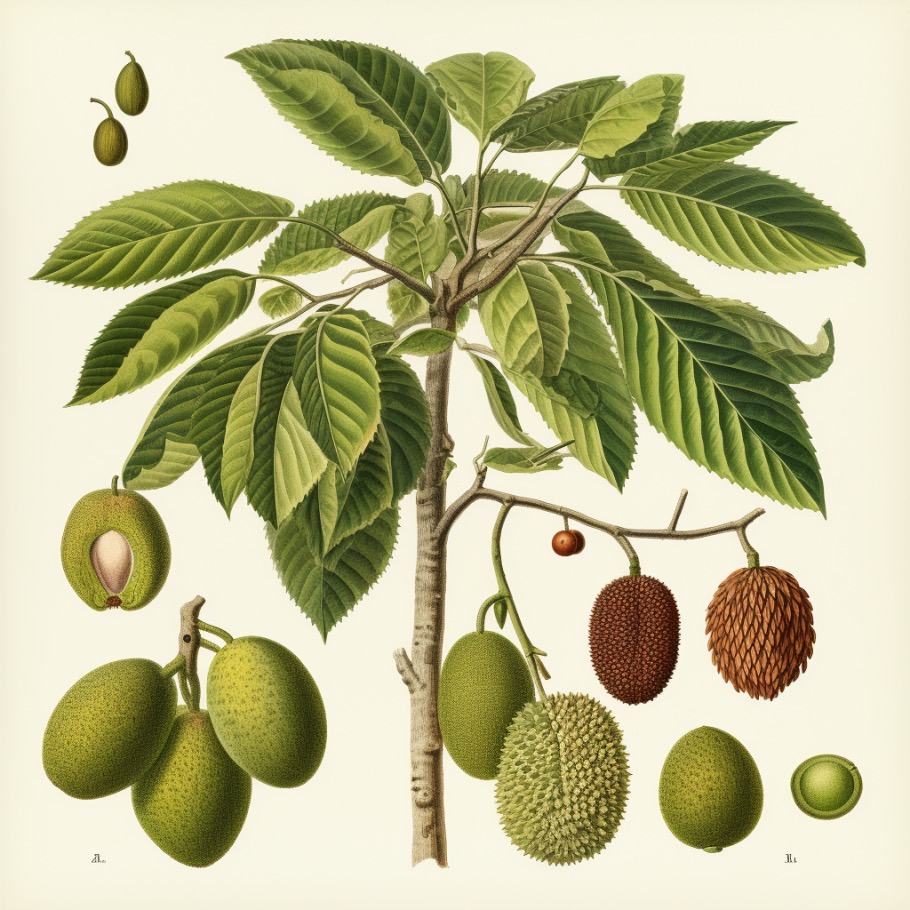The Amazing World of Vegetables Growing on Trees
Updated on
November 19, 2023

Vegetables Growing On Trees
A usual interpretation of vegetables often paints a picture of small plants sprouting from the ground, that we harvest and enjoy in our meals. However, what if we told you that there's a unique world of vegetables growing on trees that many of us have yet to discover? In this comprehensive guide, we'll venture into this fascinating realm, discussing the many vegetables that surprisingly grow on trees, their culinary uses, and the benefits they offer.
Follow us to keep learning!
Cheatsheet: Vegetables Growing on Trees
1. Avocado
Rich in healthy fats and fiber 🥑🔋
2. Olive
Source of heart-healthy monounsaturated fats 🫒❤️
3. Coconut
Packed with electrolytes and immune-supporting nutrients 🥥💪
4. Banana
Loaded with potassium and mood-boosting compounds 🍌😊
5. Tomato
Abundance of lycopene, a powerful antioxidant 🍅🛡️
6. Jackfruit
Nutritious meat substitute with a meaty texture 🍈🌱
7. Pomegranate
High in antioxidants and known to improve heart health 🍎💓
8. Mango
Rich in vitamins A and C, supports eye health and immunity 🥭👀
9. Cashew
Offers healthy fats and minerals for optimal brain function 💰🧠
10. Walnut
Provides omega-3 fatty acids, promoting heart health 🌰❤️
11. Pistachio
Delivers protein, fiber, and beneficial antioxidants 🌰💪
12. Fig
High in fiber and essential minerals for bone health 🍒🦴
13. Almond
Rich in vitamin E and magnesium, aids in skin health and stress reduction 🥜🧖♀️
14. Guava
Loaded with vitamin C and fiber, supports immune system and digestion 🌺🔬

Who said vegetables only grow in patches or in vines? Over the years, I've come to discover a fascinating fact - there are actually a host of vegetables growing on trees! Let's dive into this amazing world.
An Overview : Vegetables Growing On Trees
When we think about 'fruit' trees, we conjure images of apples, oranges, and peaches, but believe it or not, some trees produce what we typically refer to as vegetables. These include avocados, peppers and olives.
Nature, in its endless wonders, has gifted us with these trees dabbling in the extraordinary.
Avocados – The Berry Disguised as a Vegetable
Yes, you heard right! The much-loved avocado is a tree vegetable or, rather, a large berry with a single seed. I've had countless experiences growing these nourishing fruits. Their need for warm climates, however, means they are not for every backyard.
Peppers - Spice Hanging from Branches
Pepper trees, like the Brazilian peppertree, produce small, bright red fruits that, while technically a berry, are used as a spice in many cuisines. From my experience, they can add a beautiful touch of colour to your yard, as well as spice to your meals.
Olives – The Mediterranean Delight
Another surprising tree vegetable, olives, are an integral part of Mediterranean diets. Grown on the Olea Europaea tree, they are wonderful for adding variety to your typical garden offerings.
In reality, botanically speaking, olives are classified as a fruit, just like the avocado and pepper, but their savoury taste has led us to see them, and use them, as vegetables.
Fabaceae – The Bean Trees
The Fabaceae family, also known as the bean family, is another intriguing group of trees that bear vegetables. This includes the Tamarind and Carob trees which are known for their edible pods.
These can indeed become fantastic additions to your garden, breaking the monotony of the usual vegetables we see around. It's this aspect that makes vegetable tree gardening a novel endeavour to explore.
Rewards and Challenges
Like any garden endeavour, growing tree vegetables does come with its share of rewards and challenges. On the plus side, they can add a unique aesthetic and biodiversity to your garden while providing fruits that double as vegetables.
On the flip side, they do require certain climatic conditions and care, making it crucial to understand their needs. From my own experience, patience, careful planning, and constant care are key to successful tree vegetable growth.
Remember, gardening is all about adaptation and innovation. So, why not challenge the norm and take a leap into the extraordinary world of vegetables growing on trees?
Frequently Asked Questions
Can vegetables grow on trees?
Yes, certain vegetables can grow on trees, offering a unique and fascinating way to cultivate a variety of produce.
Which vegetables grow on trees?
Some examples of vegetables that grow on trees include avocados, olives, and coconut.
How do vegetables grow on trees?
These vegetables grow on trees when the seeds are planted or when the tree itself produces the fruit.
Are vegetables growing on trees common?
No, vegetables growing on trees are not as common as those growing in the ground or on vines, but they provide a delightful addition to any garden.
Can anyone grow vegetables on trees?
Yes, with proper care and suitable growing conditions, anyone can have success in growing these unique vegetables on trees.
Do vegetables growing on trees require special care?
Although they may require specific care to thrive, vegetables growing on trees generally follow similar care principles as traditional plants in terms of sunlight, water, and fertilization.
Are vegetables growing on trees organic?
Vegetables growing on trees can be grown organically if the trees are nurtured without the use of synthetic fertilizers or pesticides.
Understanding and exploring the realm of vegetables growing on trees opens up a whole new world of gardening and culinary opportunities. Not only do these tree-grown vegetables offer unique flavors to your dishes, but they also contribute to a more sustainable and eco-friendly way of farming. So, the next time you're in your garden or at the local farmer's market, why not give these tree-grown vegetables a try?





